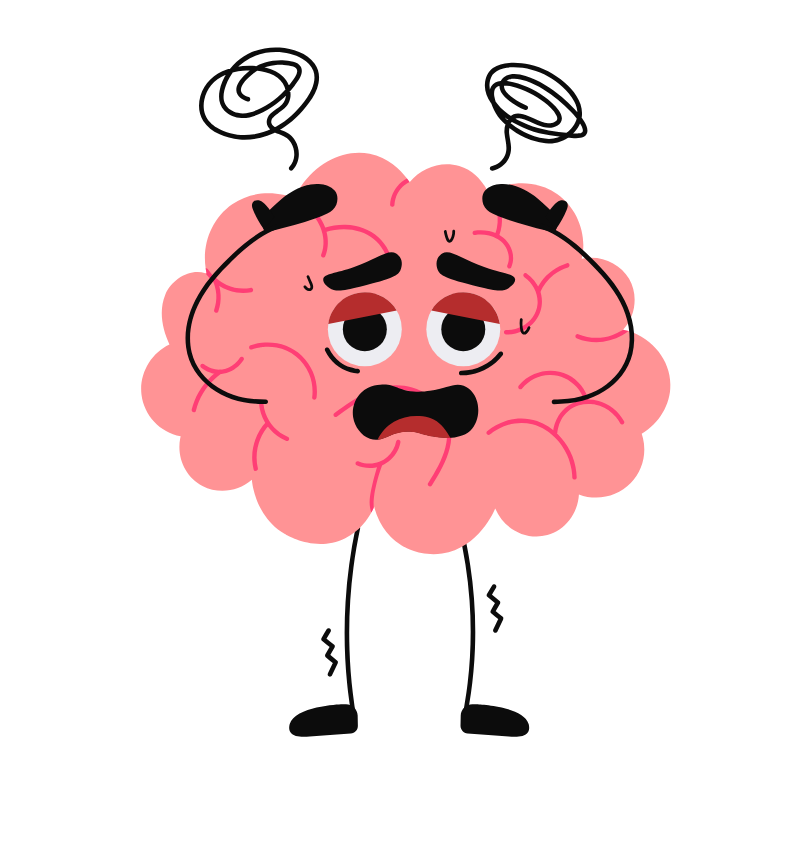Understanding and Supporting a Child with Generalised Anxiety Disorder (GAD)

As a parent, it’s natural to want the best for your child and when they struggle with anxiety, it can be both confusing and distressing. Generalised Anxiety Disorder (GAD) is a condition that manifests as excessive worry and anxiety, significantly impacting daily life. While some level of anxiety is normal in children, GAD is characterised by persistent and overwhelming feelings that can interfere with their ability to thrive. Understanding GAD and how to support your child can make a world of difference.
Awareness of the signs and symptoms of GAD is crucial for early intervention. Here are some common indicators to look out for:
Excessive Worry – Children with GAD often worry excessively about various aspects of life, such as school performance, friendships or future events. This worry can be disproportionate to the actual situation.
Physical Symptoms – Look for signs of physical distress, including fatigue, restlessness, muscle tension and sleep difficulties. Children may also complain of stomach aches or headaches that aren’t linked to any medical condition.
Avoidance Behaviour – If your child is avoiding activities or situations that trigger anxiety, this could be a sign of GAD. They might refuse to go to school, attend social events, or participate in extracurricular activities.
Difficulty Making Decisions – Children with GAD often feel overwhelmed by choices, leading to indecisiveness and frustration. They might seek constant reassurance from you or others.
Emotional Outbursts – Irritability and frustration can manifest in emotional outbursts. Your child may seem easily upset over situations that wouldn’t typically cause distress.
GAD doesn’t just affect the child, it can have a ripple effect on the entire family. For children, the consequences can include:
- Poor Academic Performance: Anxiety can hinder focus and motivation, leading to declining grades.
- Social Isolation: Avoiding social situations can leave children feeling lonely and disconnected.
- Low Self-Esteem: Continuous worry can undermine a child’s confidence and self-worth.
- Physical Health Problems: Chronic anxiety can lead to various health issues, including fatigue and digestive problems.
For parents, the emotional toll can be significant. You may feel helpless, frustrated, or overwhelmed by your child’s distress. So, don’t forget about your own mental health – It’s essential to recognise these feelings and seek support for yourself as well where needed.

Supporting a Child with GAD
If you suspect your child has GAD, it’s vital to consult a mental health professional. Therapists can provide effective strategies tailored to your child’s needs. Meanwhile, here are some practical approaches you can adopt at home:
- Open Communication – Create a safe and supportive space where your child feels comfortable expressing their feelings. Let them know you’re there to listen without judgment. Encourage them to share their worries and reassure them that it’s okay to feel anxious.
- Validation – Acknowledge your child’s emotions. Let them know that their feelings are valid and that many others experience similar worries. This affirmation can help them feel understood and less alone.
- Limit Stress – Evaluate your child’s schedule and reduce unnecessary stressors. This may involve scaling back on extracurricular activities or managing homework loads. Creating a balanced routine can help alleviate anxiety.
- Encourage Healthy Habits – Promote a lifestyle that includes sufficient sleep, a balanced diet and regular physical activity. These elements are crucial for overall well-being and can significantly impact anxiety levels.
- Seek Professional Help – Consider therapy options such as Neuro linguistic Programming (NLP) or cognitive-behavioural therapy (CBT), which have proven to be effective for anxiety disorders. In some cases, medication may also be appropriate, depending on your child’s needs.
When I have worked with children with GAD, an important step has been helping them work out and understand what parts of life they can control and what lies outside of their control. For example, a young person may feel anxious about people looking at them as they walk into school. They can’t stop others looking at them but they can change how that makes them feel by telling themselves – “I’ve got this, they are looking at me because I’m confident” or “I’m fine, they are just looking my direction” I help children and young people realise that they are in control of their own thoughts, feelings and actions but not those of others. Learning to adjust their response to a situation and how they think about it, is much more helpful than worrying about the parts they have no control over. In my sessions, we also often spend time talking about the negative ‘what ifs’ that run through a child’s mind and consider more positive alternatives. “What if I fail my exams?” can be changed to “ I’ll prepare for my exams and do my very best.”
As a parent, supporting a child with GAD can be challenging and it’s important to take care of your own mental health as well. You may find it useful to engage in activities that nourish your mind and body, such as mindfulness practices, exercise or spending time with friends and family. Taking care of yourself enables you to be more present and supportive for your child.
According to the National Health Service (NHS), approximately 1 in 6 children aged 5 to 16 experiences a mental health problem, with anxiety disorders being a significant portion of these cases. GAD specifically affects about 2% of children and adolescents in the UK. (2023)
There may be local or online support groups you could join where you can discuss challenges and successes you have had with your child’s progress and connect with other parents who have children with GAD. Sharing experiences can provide comfort and valuable insights.
Remember, You Are Not Alone
Many parents have successfully supported their children through GAD. With the right resources and support, children can learn to manage their anxiety and lead fulfilling lives. You can make a significant impact by showing understanding and compassion.
By understanding GAD and implementing these strategies, you can provide your child with the support they need to thrive. Remember, seeking help is a sign of strength, and together, you can navigate this journey toward better mental health.

Leave a Reply